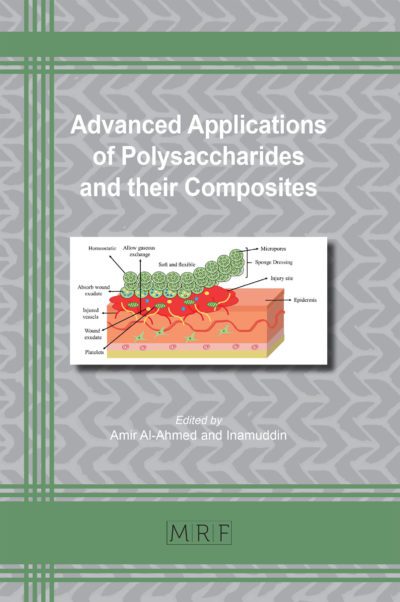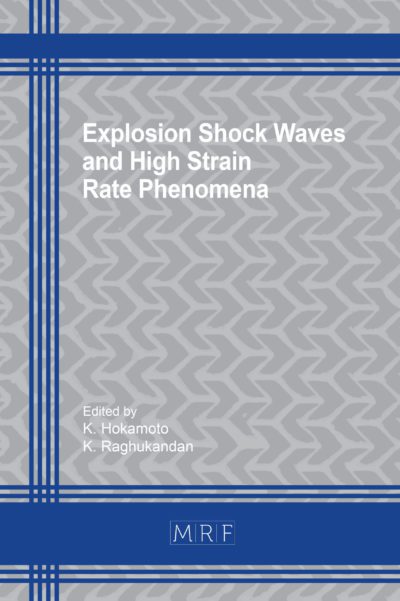Microstructural and Mechanical Properties of Al 5052-SS 316 Explosive Clads with Different Interlayer
E. Elango, S. Saravanan, K. Raghukandan
download PDFAbstract. This study focuses on the effect different interlayer viz., copper, aluminium and stainless steel interlayer on the explosive cladding of aluminum alloy (Al 5052) – stainless steel (SS 316) plates subjected to varied process parameters viz., standoff distance, loading ratio (mass of explosive/mass of flyer plate) and inclination angle. The interface transforms from straight to wavy, while increasing the standoff distance and loading ratio. Moreover, increase in loading ratio enhances the wave length and the amplitude of interfacial wave. Mechanical testing viz., Vickers micro-hardness, Ram tensile and side shear test were conducted on Al 5052-SS 316 explosive clads and the results are reported. The maximum hardness is obtained for Al-SS 304-SS 316 explosive clads, while the tensile and shear strength of aluminum-SS 316 explosive clads with copper interlayer exhibit an acceptable joint strength.
Keywords
Explosive Cladding, Aluminium, Steel, Microstructure, Strength
Published online 7/30/2019, 5 pages
Copyright © 2019 by the author(s)
Published under license by Materials Research Forum LLC., Millersville PA, USA
Citation: E. Elango, S. Saravanan, K. Raghukandan, Microstructural and Mechanical Properties of Al 5052-SS 316 Explosive Clads with Different Interlayer, Materials Research Proceedings, Vol. 13, pp 163-167, 2019
DOI: https://doi.org/10.21741/9781644900338-28
The article was published as article 28 of the book Explosion Shock Waves and High Strain Rate Phenomena
![]() Content from this work may be used under the terms of the Creative Commons Attribution 3.0 licence. Any further distribution of this work must maintain attribution to the author(s) and the title of the work, journal citation and DOI.
Content from this work may be used under the terms of the Creative Commons Attribution 3.0 licence. Any further distribution of this work must maintain attribution to the author(s) and the title of the work, journal citation and DOI.
References
[1] Tricarico, R. Spina, D. Sorgente, M. Brandizzi, Effect of heat treatments on mechanical properties of Fe/Al explosion-welded structural transition joints, Mater. Des. 30 (2009) 2693-2700. https://doi.org/10.1016/j.matdes.2008.10.010
[2] S. Mroz, G, Stradomski, H. Dyja, Using the explosive cladding method for production of Mg-Al-bimetallic bars, Arch. Civ. Mech. Eng. 15(2) (2015) 317- 323. https://doi.org/10.1016/j.acme.2014.12.003
[3] A. Britto, R Sagai Francis, Edwin Raj and M. Carolin Mobel, Prediction of shear and tensile strength of the diffusion bonded AA5083 and AA7075 aluminium alloy using ANN, Mater. Sci. Eng., A 692 (2017) 1-8. https://doi.org/10.1016/j.msea.2017.03.056
[4] S.Saravanan, K. Raghukandan, Thermal kinetics in explosive cadding of dissimilar metals, Sci. Technol. Weld. Joining. 17(2) (2012) 99-103. https://doi.org/10.1179/1362171811y.0000000080
[5] M. Acarer, B. Gulenc, F. Findik, Investigation of explosive welding parameters and their effects on micrhardness and shear strength, Mater. Des. 24 980 (2003) 659-664. https://doi.org/10.1016/s0261-3069(03)00066-9
[6] K. Raghukandan, Analysis of the explosive cladding of cu-low carbon steel plates, J.Mater. Process. Technol. 139 (2003) 573-577. https://doi.org/10.1016/s0924-0136(03)00539-9
[7] S.A.A Akbari Mousavi, A.A Dashti , A. Halvaee, Effect of Operational Parameters and Heat treatments on the Aluminium-Steel Explosively Composite Plates, Adv. Mater. Res. 264-265 (2011) 223-228. https://doi.org/10.4028/www.scientific.net/amr.264-265.223
[8] S.Saravanan, K Raghukandan, Influence of interlayer in explosive cladding of dissimilar materials, J. Mater. Manuf. Process. 28(5) (2013) 589-594. https://doi.org/10.1080/10426914.2012.736665
[9] P. Tamilchelvan, K. Raghukandan , S. Saravanan, Kinetic energy dissipation in Ti-SS explosivecladding with multiloading ratios, Iran. J. Sci. Technol. Transactions of Mechanical Engineering 38 (M1) (2014) 91-96.
[10] M. Acarer, B. Demir, An investigation of mechanical and metallurgical properties of explosive welded aluminum-dual phase steel, Mater. Lett. 62(25) (2008) 4158-4160. https://doi.org/10.1016/j.matlet.2008.05.060
[11] ASTM E 384-99, Standard Test for Microindentation Hardness of Materials, ASTM international, 1999
[12] S.A.A.Mousavi, P.F Sartangi, Experimental investigation of explosive welding of cp-titanium/AISI 304 stainless steel, Mater. Des. 30(3) (2009) 459-468. https://doi.org/10.1016/j.matdes.2008.06.016
[13] E.Zanani ,G.H Liaghat, Explosive welding of stainless steel-carbon steel coaxial pipes, Mater. Sci. 47(2) (2012) 99-103. https://doi.org/10.1007/s10853-011-5841-9
[14] Somasundaram, Raghukandan Krishnmurthy, Hokamoto Kazuyuki, Effect of process parameters on microstructural and mechanical properties of Ti-SS 304L explosive cladding, J. Cen. South. Univ. 24 (2017) 1245-1251. https://doi.org/10.1007/s11771-017-3528-3
[15] Kahraman N, Gulence B,fndik A, Corrosion and mechanical-microstructural aspects of dissimilar joints if Ti-6Al-4V and Al plates, Int. J. Impact. Eng. 34(8) (2007) 1432-1432. https://doi.org/10.1016/j.ijimpeng.2006.08.003
[16] Y.B. Yan, Z.W. Zhang, W. Shen, J.H.Wang, L.K. Zhang, B.A. Cin, Microstructure and properties of magnesium AZ31B-aluminium 7075 explosively welded composite plate, Mater. Sci. Eng. A. 527 (2010) 2241-2245. https://doi.org/10.1016/j.msea.2009.12.007
[17] P. Mastananiah , G. Madhusudhan Reddy, K. Satya Prasad , C.V.S Murthy, An investigation on microstructures and mechanical properties of explosive cladding c103 niobium alloy over C263 nimonic alloy, J. Mater. Process. Technol. 214(11) (2014) 2316-2324. https://doi.org/10.1016/j.jmatprotec.2014.04.025
[18] S.A.A Akbari Mousavi, S.T.S Al-Hassani, A.G Atkins , Bond strength of explosively welded specimens, Mater. Des. 29(7) (2008) 1334-1352. https://doi.org/10.1016/j.matdes.2007.06.010
[19] V.N. Rao, M.G. Reddy, S. Nagarjun, Structure and properties of explosive clad HSLA steel with titanium, Trans. Indian. Inst. Met. 67(1) (2014) 67-77. https://doi.org/10.1007/s12666-013-0313-3














